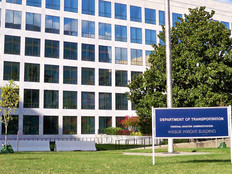OPM Embraces Shared Services to Improve Human Resources IT
There are 24 large agencies subject to the CFO Act, which aimed to improve federal financial management. Nearly three decades after the act was passed, however, human resources operations remain siloed across the federal government, which has created headaches and inefficiencies.
The Office of Personnel Management aims to finally change that by using shared services.
In November, OPM released the Federal Human Capital Business Reference Model, or HCBRM. It was developed to standardize the delivery and performance of human capital management (HCM), defined as the comprehensive set of practices for recruiting, managing, developing and optimizing the human resources of an organization.
The end goal is to establish a common experience for all employees concerning delivery of HR operations and services. OPM wants to use the HCBRM to deliver shared services for agencies, including for IT functions, to achieve that aim. The HCBRM is a manifestation of the Trump administration’s push to get agencies to use shared services, which is a key element of its IT modernization plan. The HCBRM was developed alongside the Unified Shared Services Management office, and OPM will lead the effort, Federal News Radio reports.
SIGN UP: Get more news from the FedTech newsletter in your inbox every two weeks!
Enhanced Shared Services to Improve HR
The HCBRM, which OPM says was developed by engaging with HR policy and industry experts, is a “foundational model [that] provides a common structure, language and definition that integrates HR operations, finance and acquisition,” according to a memo signed by acting OPM Director Kathy McGettigan.
In a blog post, McGettigan says that the HCBRM is a functional tool that can be used by agency leaders, HR professionals and OPM’s partners inside and outside government. The framework lays out “a clear, transparent and common HCM functional structure” in four ways:
-
Inform everyone with a simplified view of HR operational functions and policy ownership.
-
Give HR practitioners a quick reference to understand the functional requirements for their specific area of HR.
-
Provide agency leadership with a model to more effectively plan, deliver, assess and manage their HR workforce, policy, processes, budget, service and delivery.
-
Lay out the federal HCM blueprint for governmentwide HR operations, acquisition, budget formulation, programmatic evaluation, shared services and data.
“The HCBRM delivers value because it will be used to help streamline governmentwide HR operations, standardize HR service delivery including information technology, simplify HR acquisitions and drive transparency in the HR budge,” McGettigan says in a news release. “These are all benefits that can have long-lasting impact across the executive branch.”
The framework explicitly states that it can be used by federal human capital leaders and HR practitioners to “align, assess and modernize” HR IT and shared services to support all human capital functions.
David Vargas, program director, HR line of business for OPM, tells Federal News Radio the siloed approach to HR across the government led to fragmented architectures at agencies that posed challenges for employees and HR systems, especially if employees worked at multiple agencies.
The new framework is the successor to the Bush administration’s e-government initiative and broadens the focus, Vargas says.
“The future of HR shared services is foundationally based on organizing the government around a single HR service catalog to facilitate a governmentwide common user experience,” he tells Federal News Radio.
This will spur the adoption of cloud-based Software as a Service solutions across agencies “while allowing operational process-based flexibility from agency-to-agency.”









